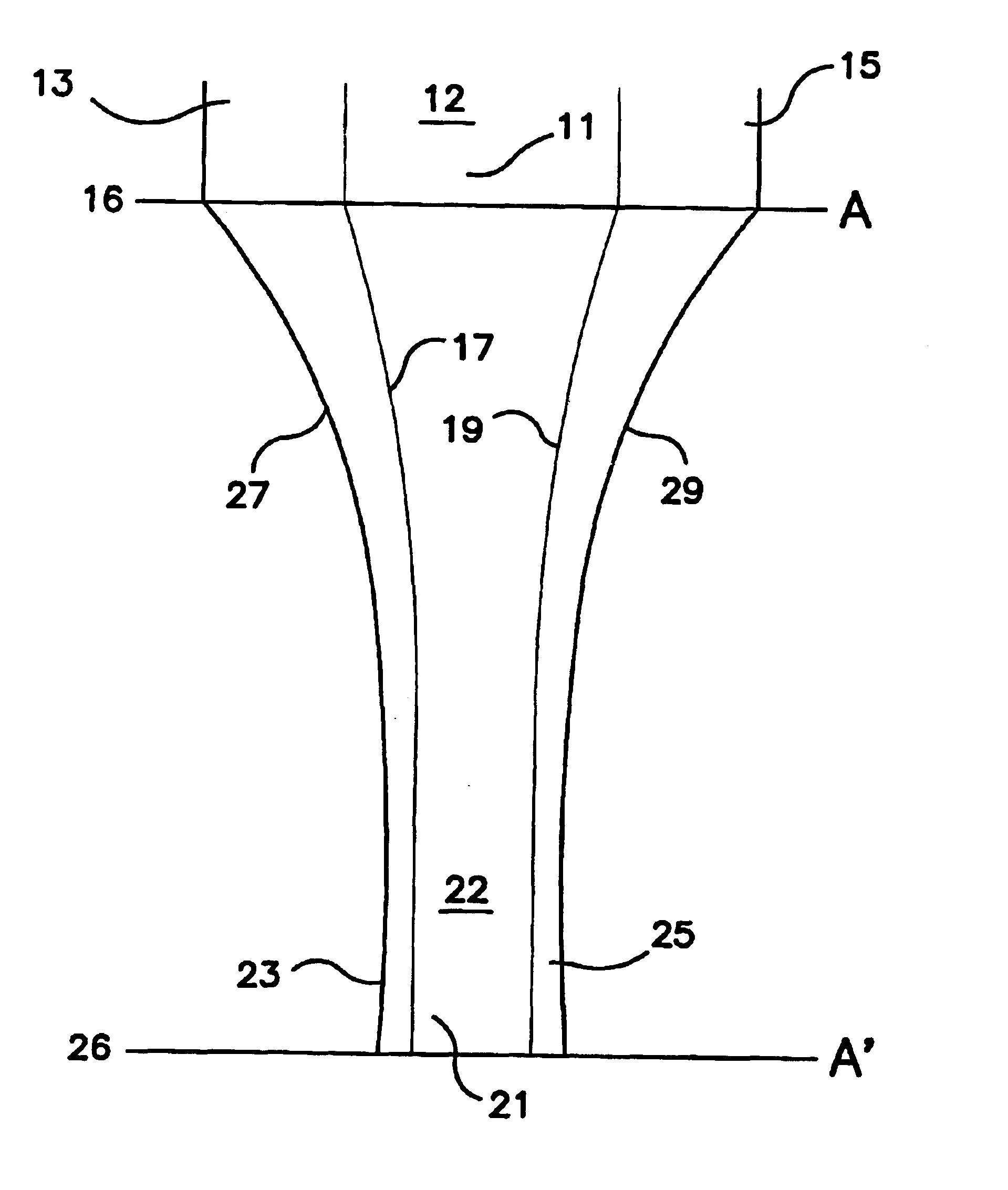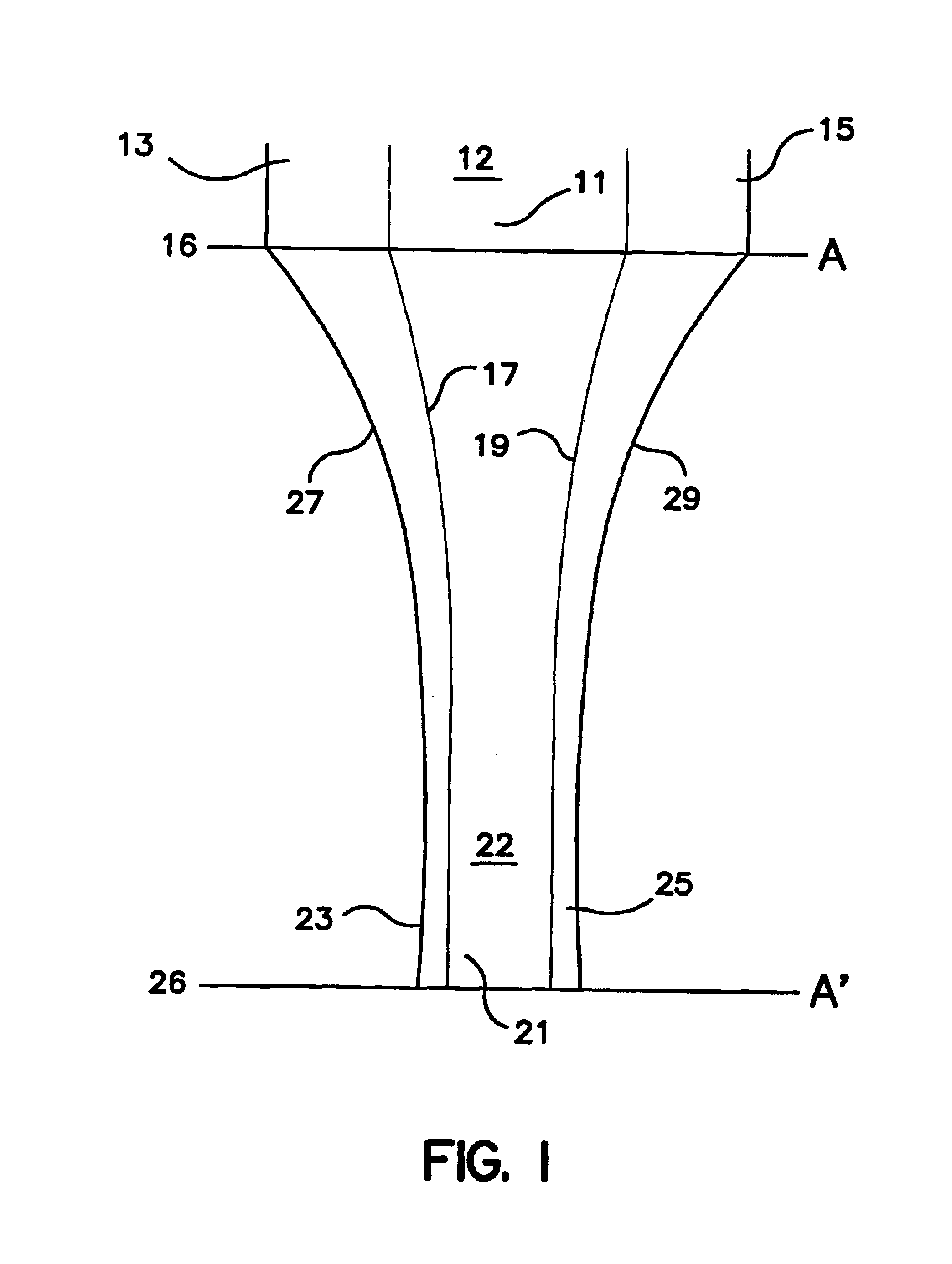Nonwoven webs having improved necking uniformity
- Summary
- Abstract
- Description
- Claims
- Application Information
AI Technical Summary
Benefits of technology
Problems solved by technology
Method used
Image
Examples
Embodiment Construction
[0032]Referring again to FIG. 1, a neckable nonwoven web 12 has a central region 11 and two end regions 13 and 15. The central region 11 has different physical properties and / or polymer composition than the two end regions 13 and 15, so that the central region has relatively easier necking.
[0033]As explained above, the central region is defined as the central 70% of the lateral width of the nonwoven web, and the two edge regions are defined as the outermost 15% of the lateral width on both sides of the central region. However, this does not mean that the boundaries between the nonwoven fibers which are selectively easier to neck, and the fibers which are harder to neck, must occur precisely at the edges 17 and 19 of the central region. These boundaries may occur inward or outward of the edges 17 and 19 of the central region, so long as the central region is, on average, easier to neck than the two edge regions.
[0034]For instance, the boundaries between fibers which are selectively e...
PUM
| Property | Measurement | Unit |
|---|---|---|
| Fraction | aaaaa | aaaaa |
| Fraction | aaaaa | aaaaa |
| Fraction | aaaaa | aaaaa |
Abstract
Description
Claims
Application Information
 Login to View More
Login to View More - R&D
- Intellectual Property
- Life Sciences
- Materials
- Tech Scout
- Unparalleled Data Quality
- Higher Quality Content
- 60% Fewer Hallucinations
Browse by: Latest US Patents, China's latest patents, Technical Efficacy Thesaurus, Application Domain, Technology Topic, Popular Technical Reports.
© 2025 PatSnap. All rights reserved.Legal|Privacy policy|Modern Slavery Act Transparency Statement|Sitemap|About US| Contact US: help@patsnap.com



